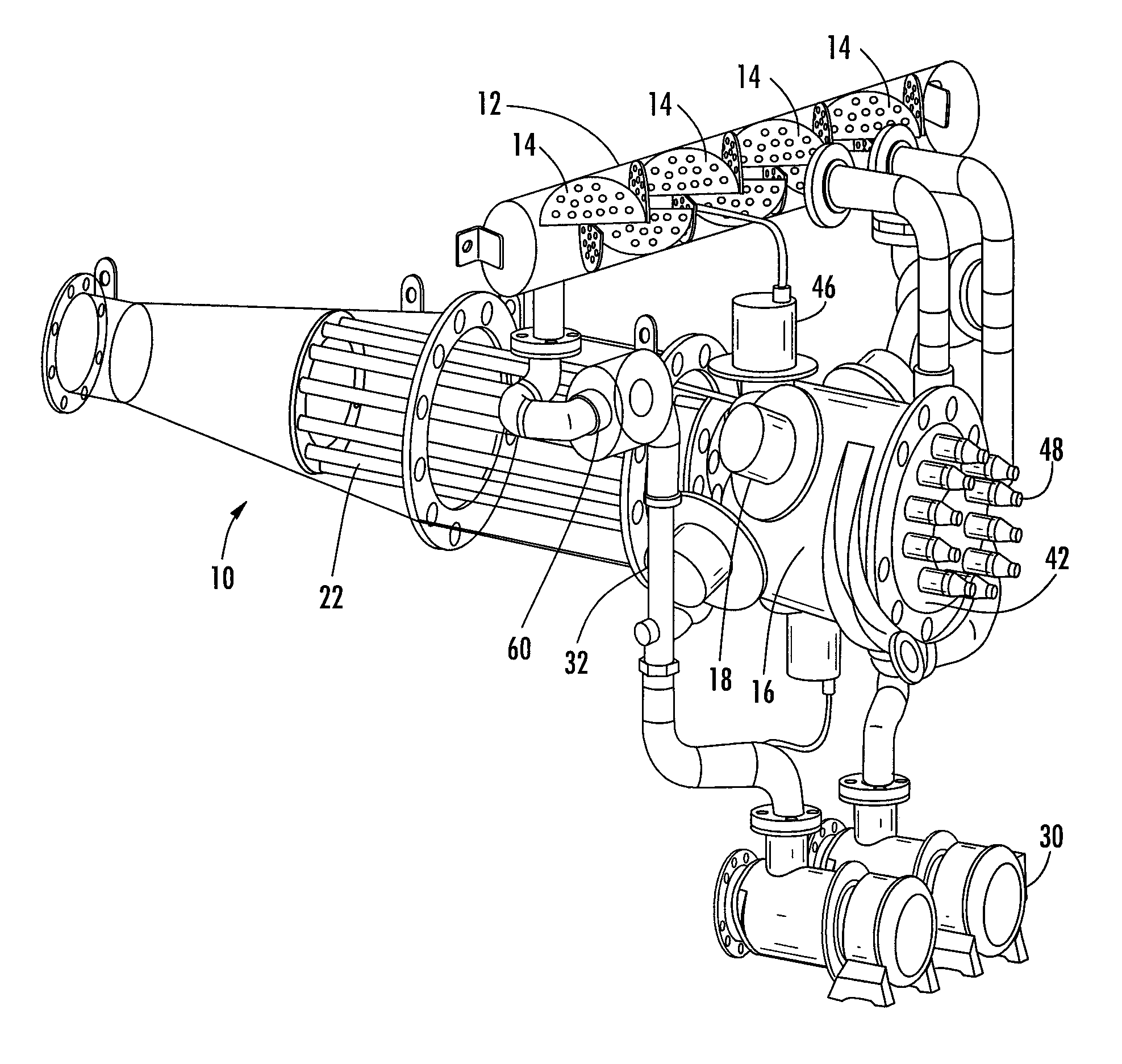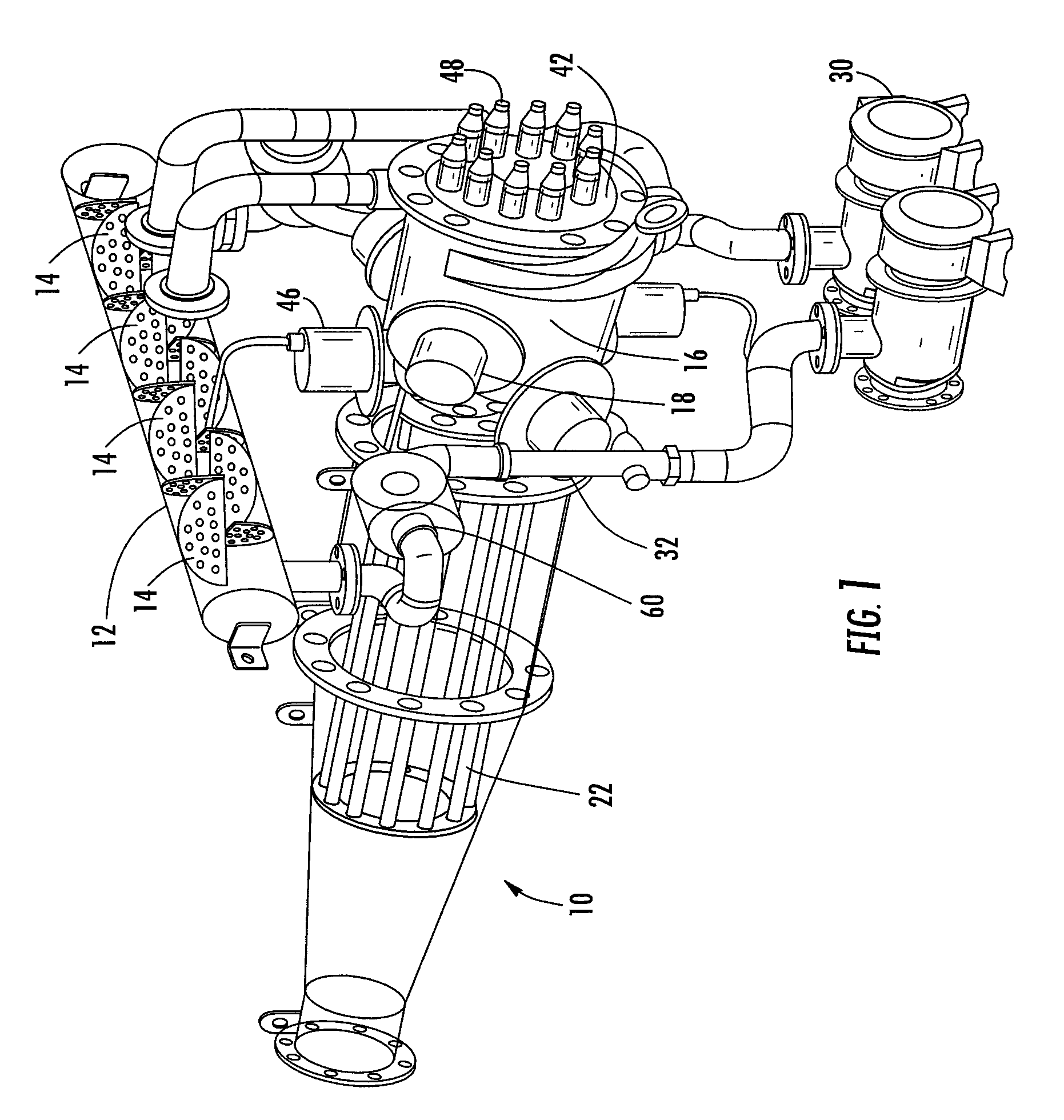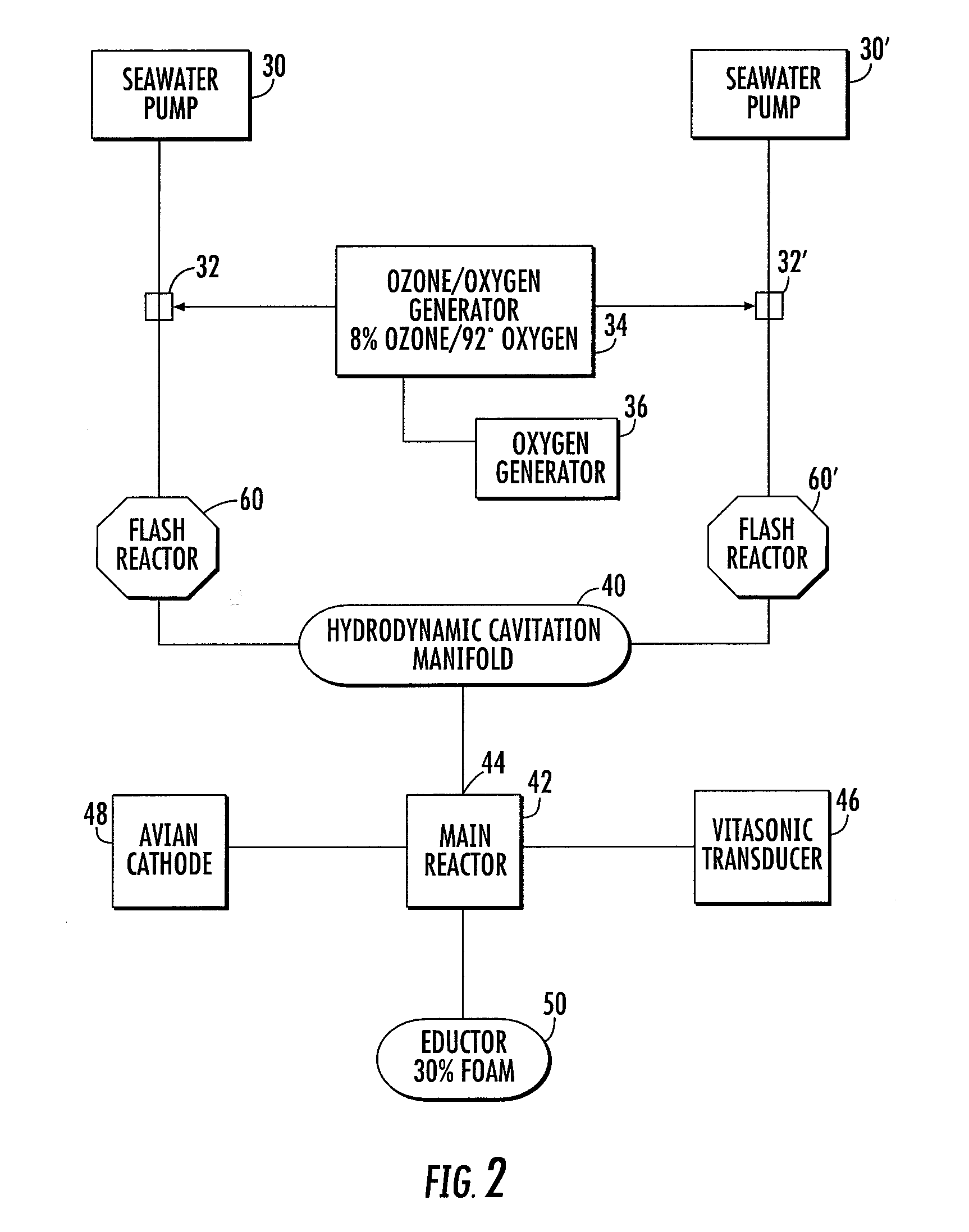Deepwater oil recovery process
a deepwater oil recovery and process technology, applied in separation processes, multi-stage water/sewage treatment, borehole/well accessories, etc., can solve the problems of contaminating the coast line, unable to accurately predict the volume of oil released, and the oil spill described as the largest environmental disaster
- Summary
- Abstract
- Description
- Claims
- Application Information
AI Technical Summary
Benefits of technology
Problems solved by technology
Method used
Image
Examples
Embodiment Construction
[0027]For use by example, the previously mentioned situation consists of an oil plume having about a 3000 GOR with the oil venting into seawater at about 2270 psi and 33 F. Methane rich gas forms gas hydrates in this environment at a specific gravity of 0.9. The degassed oil plume has density close to about 0.8 specific gravity and close to about 120 cp viscosity. The addition of a dispersant causes significant (about 4 to 1) emulsification of seawater and oil. It should be noted that to bio-degrade 10,000 bbls of oil by weathering would require approximately 40 square miles of seawater above the thermocline. Thermochimica Acta Volume 312, Issue 1-2, Mar. 23, 1998, Pages 87-93, shows that the heat of adsorption for oxygen gas is 125 kcal / gmol for the unsaturated carbon sites. This is an exothermic reaction, not oxidation. It is adsorption of an oxygen molecule on an unsaturated site in the asphaltene molecule which is similar to hydrogen bonding of sticky maple syrup on a plate surf...
PUM
| Property | Measurement | Unit |
|---|---|---|
| oil flow rates | aaaaa | aaaaa |
| pressure | aaaaa | aaaaa |
| specific gravity | aaaaa | aaaaa |
Abstract
Description
Claims
Application Information
 Login to View More
Login to View More - R&D
- Intellectual Property
- Life Sciences
- Materials
- Tech Scout
- Unparalleled Data Quality
- Higher Quality Content
- 60% Fewer Hallucinations
Browse by: Latest US Patents, China's latest patents, Technical Efficacy Thesaurus, Application Domain, Technology Topic, Popular Technical Reports.
© 2025 PatSnap. All rights reserved.Legal|Privacy policy|Modern Slavery Act Transparency Statement|Sitemap|About US| Contact US: help@patsnap.com



